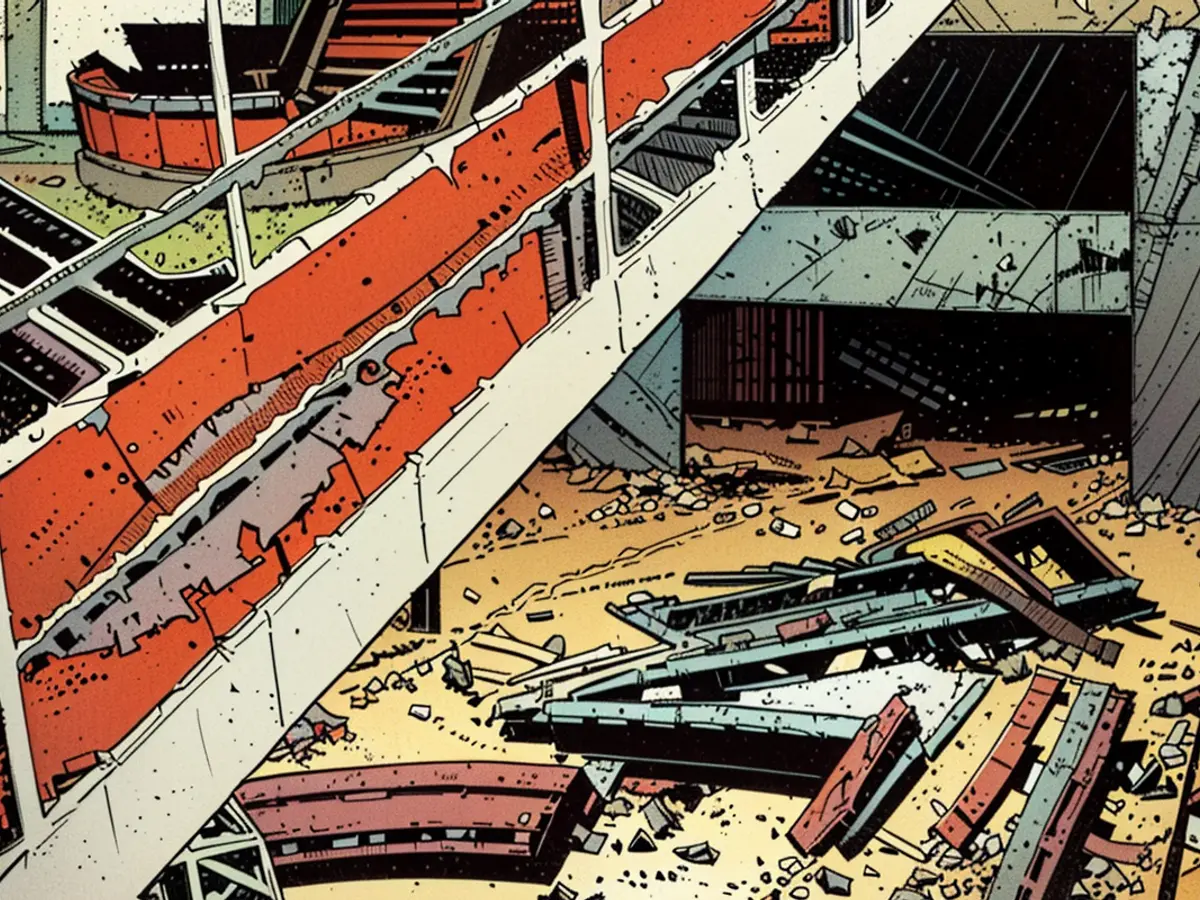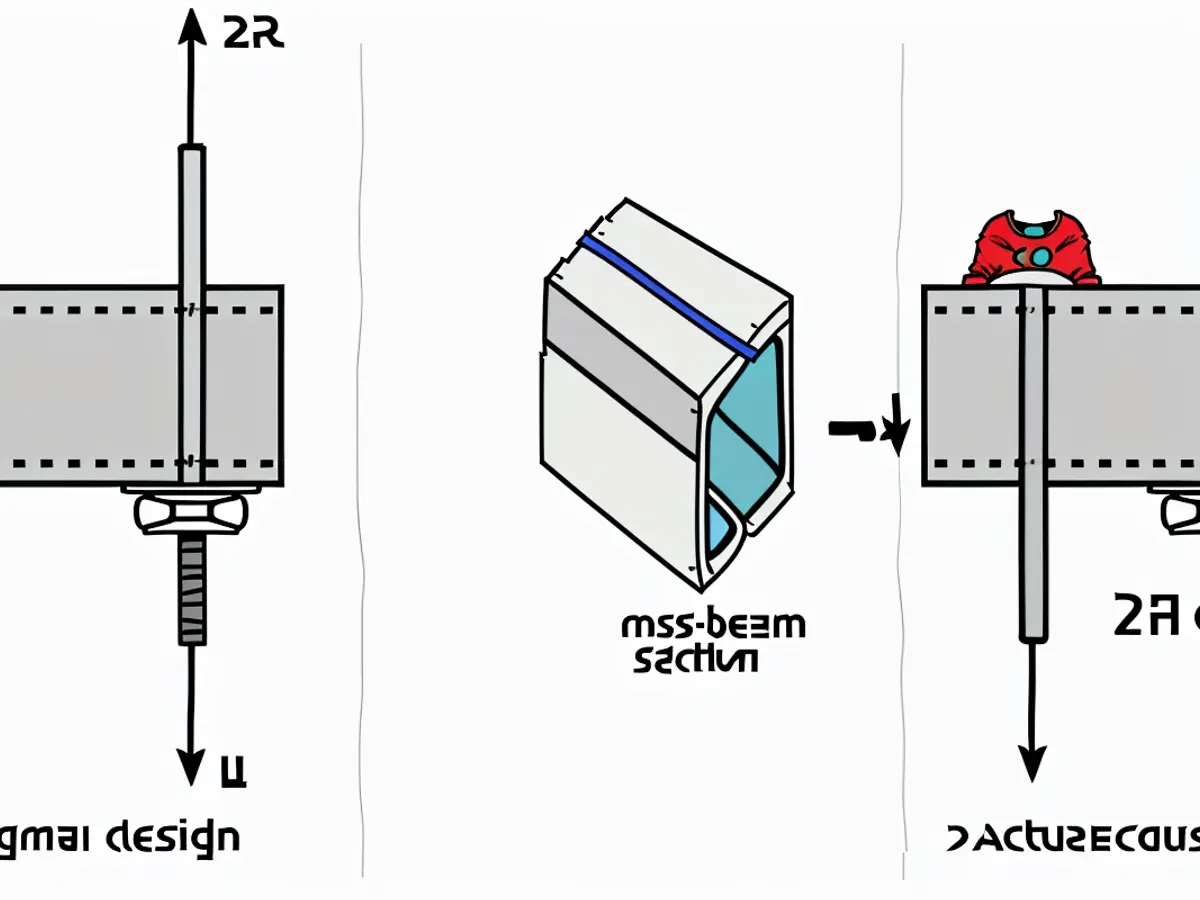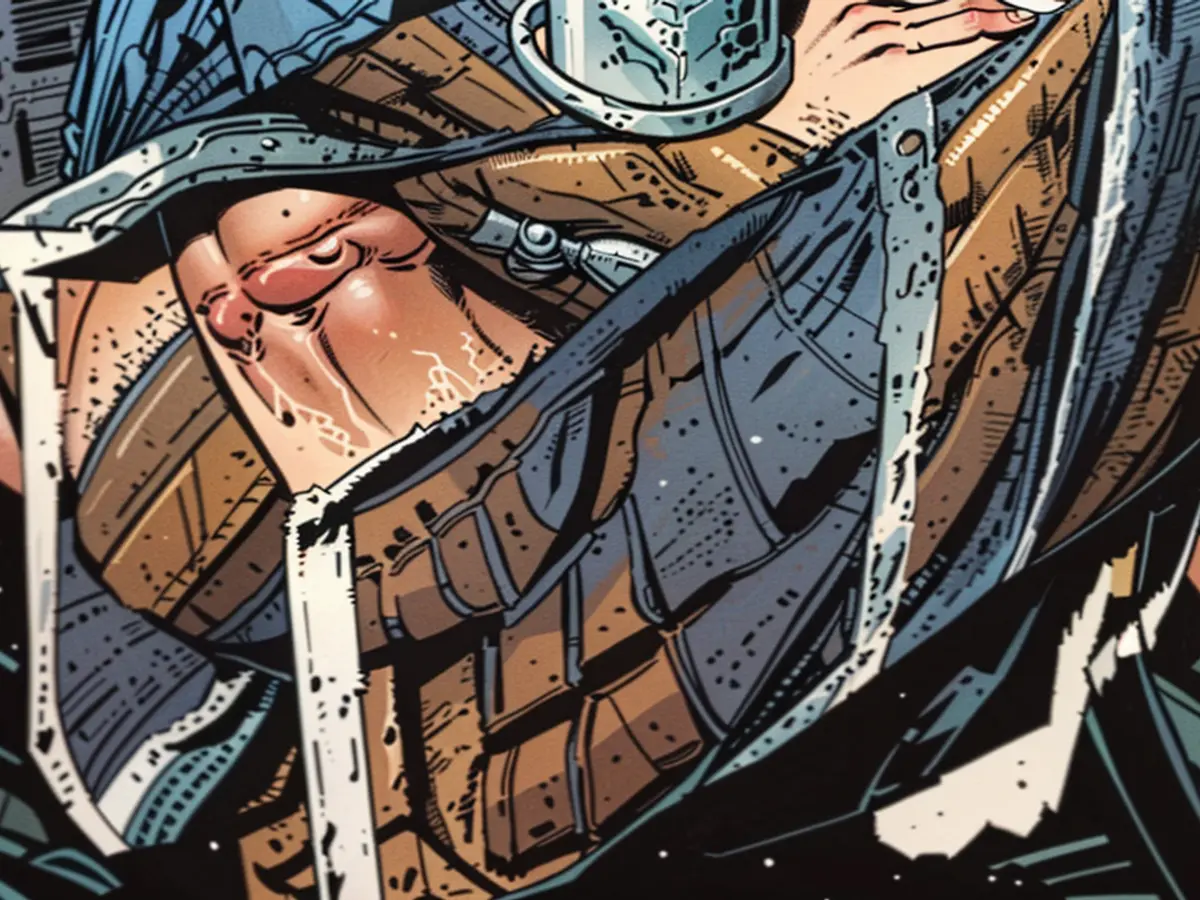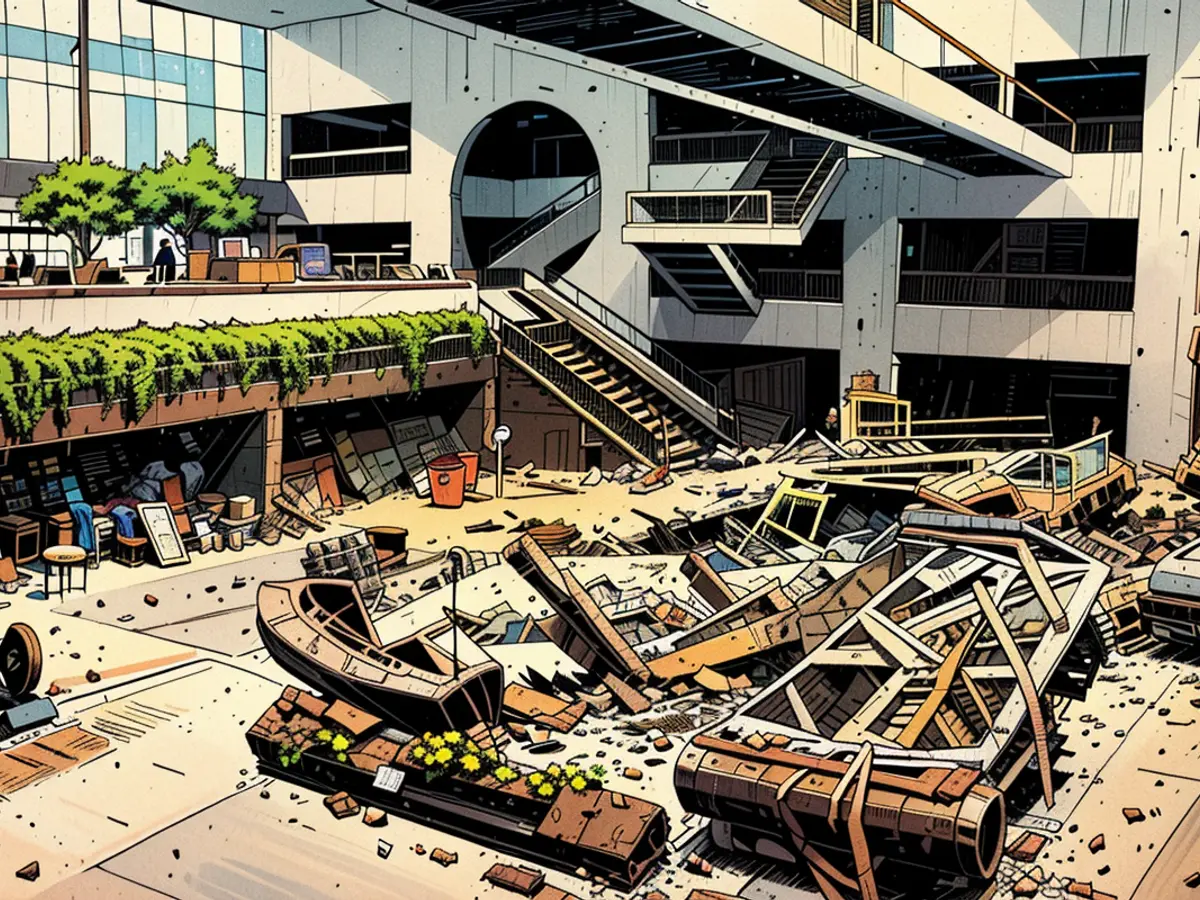Anniversary of the Misfortune - Death came at the Tea Dance Party: The Collapse Drama of Hyatt Regency
The Hyatt Regency in Kansas City, Missouri, is set to be a prestigious project, as the city aims to shake off its old image as a stockyard. Construction on the 150-meter tall and 40-story building began in May 1978 and lasted less than two and a half years. The focal point of the hotel will be the massive reception hall. A glass ceiling spans the multi-level atrium.
Beneath the ceiling, three suspended walkways, or hovering pedestrian bridges, connect guest rooms, conference rooms, and a shopping passage between the north and south wings. Two of them, on the fourth and second floors, lie directly on top of each other. The third one on the third floor is a few meters further away. Guests were supposed to stroll over the 37-meter-long bridges and enjoy a stunning view of the atrium.
Tragedy at the Hyatt Regency in Kansas City claims 114 lives
On that Friday evening, July 17, 1987, a 1940s-style dance party is taking place in the lobby. Over 1500 guests are enjoying themselves when suddenly there is a loud explosion. The top bridge on the fourth floor collapses directly onto the one below.
Hundreds of guests are crushed or buried alive under 65 tons of steel and concrete. "The sight was horrifying, simply terrifying," recalls survivor Walter Trueblood in a TV documentary. "Some had severe lacerations, others were mutilated, had lost limbs." Others were trapped under the walkways or amidst the rubble.
Water gushes from ruptured pipes on the ceiling. Now, 1000 liters of water per minute pour from the hotel's massive tanks into the lobby. The trapped people now face drowning. Fire department chief Marc Williams is pinned to the ground by 65 tons of debris. "The water filled my nose as I breathed. I thought I was at one of the highest points in Kansas City and was still going to drown." The fire department chief recognizes the problem and calls for bulldozers to be brought in, allowing the water to flow out.

Shirley Trueblood's legs are shattered from the knees to the hips. Her husband Walter has a broken clavicle, a collapsed right lung, and a fractured pelvis.
Four nearby hospitals dispatch their emergency medical teams. The lobby becomes a makeshift morgue, the taxi stand in front of the hotel a triage area. Doctor Joseph Waeckerle must make life-or-death decisions based on the triage protocol. Volunteers respond to a call and bring wrenches, flashlights, compressors, air compressors, concrete saws, and generators to the scene.
Ten hours after the collapse of the walkways, the rescue teams focus only on recovering bodies. They use air compressors to break up the concrete slabs of the collapsed walkways. They don't realize that Marc Williams is still alive among them. Only when the air compressor is moved for a new hole do they hear his desperate pleas for help.
It is now 4.30 am, as firefighters heavily injured him out of the rubbles. He is the last one to be rescued alive. Both his legs are broken, his spine is shattered, and his kidneys are failing. He spends two months on the intensive care unit, and after many months of painful rehabilitation, he is fully recovered. The Truebloods are also recovering from their injuries.
The "Kansas City Star" sets a civil engineer as undercover investigator

Kansas City Mayor Richard Berkley appeals for investigations to the National Bureau of Standards (NBS). The NBS is a renowned and independent federal agency that provides scientific reports for the US government. However, their investigations could take months. The local newspaper "The Kansas City Star" wants faster results and sends a civil engineer as undercover investigator, posing as a reporter on site.
Charges that the galleries were overloaded are dismissed by the president of the hotel chain. According to the Kansas City building code, public buildings must withstand minimum loads of 488 kilograms per square meter. The two galleries should therefore have been able to bear at least 1280 people. However, the footage of a TV team filming the Tango Tea shows that there were actually 40 people on the lower and 23 on the upper gangway at the time of the collapse. Together, they weighed only 83 kilograms per square meter, significantly less than the allowed maximum weight.
During his investigation, the undercover engineer discovers that the original building plans did not match the later implementations. According to the blueprints, the first and third skywalks should have been secured to the ceiling with a multitude of 32 millimeter thick steel suspension rods. Instead, the lower gangway was secured to the upper one, causing twice the weight to rest on it. The change proposals for this came from the responsible steel manufacturer, as they were easier to build.
The debris reveals that the two I-beams, which were welded together as a connection point to hold the rods in place, were bent inward. A later reconstruction shows that at the time of the collapse, a load of around nine tons was on them. An official investigation later reveals that the welding joint broke at 8160 kilograms and the entire construction failed at 8255 kilograms.
Engineer of the Skywalks admits negligence

The NBS concludes that the support points at the upper connection gangway could not even come close to bearing the weight of two galleries with the people on them. They only had about one third of the required strength according to the Kansas City building code. The accident was therefore predetermined from the day of its installation. As the responsible chief engineer of the construction company later admits, no one had calculated the strength of the connection points for the galleries. He claims that in Missouri, it is common practice for the manufacturer to take on this responsibility. However, the manufacturer insists on the engineer's responsibility for the building plans.
In November 1984, the state authorities declared the responsible construction company for the collapse and held the engineer accountable for negligence, misconduct, and unprofessional behavior. His engineering license in the state of Missouri was revoked. He later reflected that the design flaw was so obvious that "any first-semester engineering student could have found it," had it been checked. The survivors and families of the victims received over 140 million dollars in compensation payments from the building owners' insurance.
As a result of the tragedy, building regulations were updated. All calculations of load-bearing elements must now be checked by a city inspector. The American Engineering Association amended its rules so that engineers are responsible for their own engineering plans.
For its 16-month investigative reporting on the collapse, the "Kansas City Star" and its sister publication "Kansas City Times" were awarded the Pulitzer Prize in 1982.
Since November 12, 2015, a memorial stands in Hospital Hill Park across from the hotel to commemorate the victims. The metal sculpture, depicting dancers in mid-air and with the names of the victims engraved on its steel pole, stands across from the former Hyatt Regency, now operated as the Sheraton Kansas City Hotel in Crown Center.

Up top in the video: The "Medusa Beach Club" collapsed on the Spanish island of Mallorca last night, resulting in fatalities and injuries. Reporter Eva Rullmann reports from the scene with the latest information on the victims and the collapse.
- The collapsed walkway at the Hyatt Regency in Kansas City, Missouri, was featured in a World TV Documentary, providing a harrowing account of the tragedy.
- Despite the Hyatt Regency in Kansas City, Kansas, being a significant project and aiming to enhance the city's image, the incident remains one of the top news headlines worldwide.
- The Fire department in Kansas City was heavily involved in the aftermath of the unfortunate incident at the Hyatt Regency, working tirelessly to rescue survivors and recover bodies.
- The Hyatt Regency tragedy in Kansas City caught international attention, as it was cited in a news segment discussing a similar misfortune at the "Medusa Beach Club" in Mallorca, Spain.
- The Hyatt Regency in Missouri, although currently operating as the Sheraton Kansas City Hotel in Crown Center, continues to be associated with the unfortunate event that occurred in 1987, serving as a reminder of that fateful Friday night in July.






